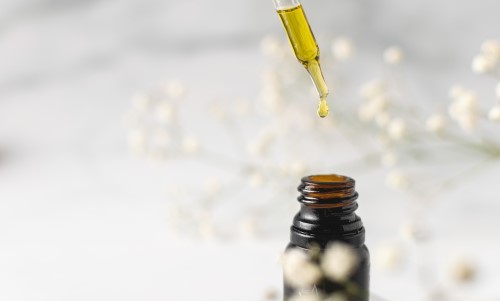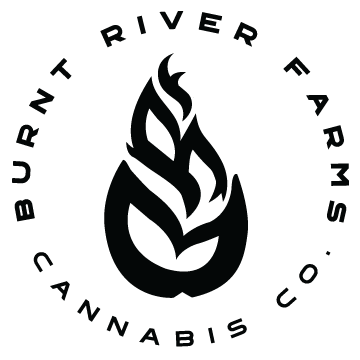WHAT IS CBD? - May 21, 2020

The chances are good that most people have heard of CBD. It’s one of the trendy topics being discussed right now. Those who live in a state where it is legal may feel like CBD has moved from only being found from time to time to being everywhere.
While CBD is infiltrating virtually every corner of the wellness world, there are still some people who find this product somewhat confusing. This is especially the case when they are trying to figure out the right way to use it. Also, there are scammers out there, so finding a legitimate product is essential. Keep reading to learn about CBD oil, what it offers, and why it has become so popular.
What is CBD Oil?
CBD is an acronym for cannabidiol. It’s a chemical compound that comes from the Cannabis sativa plant. CBD is a naturally occurring substance that is used in an array of items, such as edibles and oils, to create a feeling of calm and relaxation. Unlike THC, 9-tetrahydrocannabinol, which is the active ingredient in marijuana, CBD does not have psychoactive properties.
That means CBD will not get a user high. As mentioned above, CBD is the non-psychoactive part of the plant, which means there aren’t any euphoria effects, which is what some people describe when using THC. There are no feelings of sedation or anything else.
There are some exceptions to consider. The first is that not everyone will receive benefits from CBD use. According to some studies, approximately five percent of people say they feel an altered state after taking CBD. These are usually the same people who have an adverse reaction to Tylenol or Advil. Since there is no way to know how someone will react to CBD when they take it for the first time, they should start out with a small dosage.
What is CBD Oil Good for and Used for?
There is one type of CBD medication that has been approved by the FDA. This is Epidiolex, and the agency approved it for treating some types of epilepsy. However, there are many others who claim CBD helps with many other health conditions, such as cancer, osteoarthritis, and back pain.
Many people choose to use CBD to help with the pain. Keep in mind though, right now, there is no FDA approval for the use of CBD for pain and other medical issues. While this is true, there are many people and doctors who claim it may be effective in treating some medical issues.
There are two types of pain. These include nerve pain and musculoskeletal pain. It’s believed that CBD may be beneficial for both these. However, users should always consult their physician for medical advice.
The challenging part of dealing with pain issues is that there is some evidence suggesting CBD provides the most benefits for pain when it is combined with THC. It really depends on the type of pain a person has to determine if using a combination of the substances is necessary. Sometimes, CBD alone is enough, but in other cases, CBD needs THC to provide the desired results.
Determining how much CBD a person should take is difficult, too. The dosage that works for one person’s pain may not be adequate for another person. It’s important for each person to figure out what works for their needs, as this is the only way to know what dosage is appropriate.
Along with pain, there are some who have also claimed that CBD is effective in the management of anxiety. CBD helps to “tell” the body to calm down while reminding a person they are safe. It helps to soothe the nervous system so a person is not in a constant state of fight or flight.
There is a common misconception about CBD that it is a wonder or magic drug. Sometimes, people believe that CBD is a cure-all, but it isn’t. It is also important to have a healthy lifestyle and get plenty of exercise along with good nutrition. Regardless of how good of a product CBD is, it’s not going to fix everything.
What is Full Spectrum CBD?
Full-spectrum means a product or oil contains all the cannabinoids that naturally occur in the cannabis plant. A quality supply of full-spectrum CBD will be higher in CBD with just trace amounts of minor cannabinoids and low amounts of THC (usually under 0.3 percent). While these are very low amounts, the composition is still thought of as “full-spectrum” and is the same as the “entourage effect.” This refers to the increased effectiveness of the products because of the different cannabinoids that are working together.
Full-spectrum products are often considered more effective than the CBD products that are isolated. The products that are isolated and derived will only include the CBD molecule. Both products are available to purchase at a cannabis dispensary and, in most situations, what a person chooses is based on their personal preferences.
Types of Full Spectrum CBD Products
For a product to be considered full spectrum, it must contain at least trace amounts of all the primary and secondary cannabinoids. There are several products available for purchase today that meet these requirements.
One example is the CBD tincture, which is also called CBD Oil. It is a combination of the CO2-extracted CBD along with organic coconut oil. Usually, tinctures are sold in several flavor options.
Another full spectrum product is a CBD topical. With these products, users can target the part of their body that hurts. For some consumers, especially those with back pain, arthritis, or another part of their body, topical products ensure the CBD gets right where it is needed the most.
Using CBD
Today, CBD is available in many places and many people claim it offers an array of benefits. It is a good idea for someone who wants to try this to speak to a professional in the industry. They can help an individual find the right CBD product to ensure the desired effects are achieved. Being informed and understanding the details and specifics of CBD oil will help ensure a person makes a smart decision regarding the use of this product.
